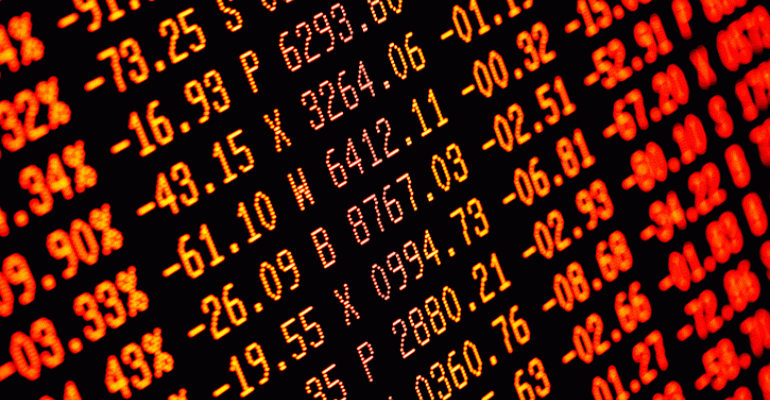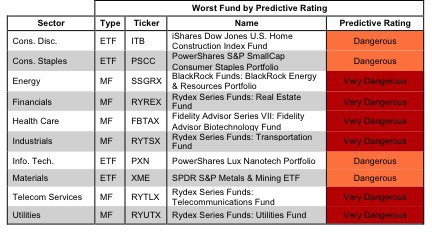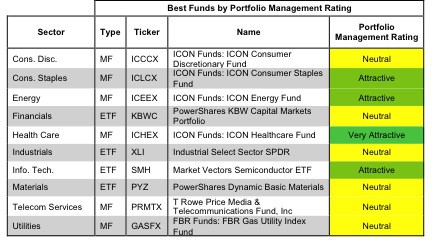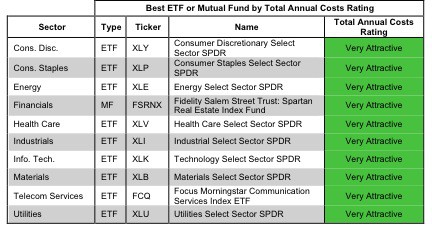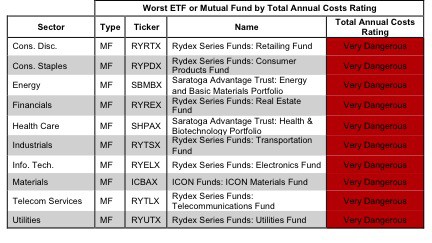My top ETFs and mutual funds have high-quality holdings and low costs. As detailed in “Low-cost funds dupe investors”, there are few funds that have both good holdings and low costs. While there are lots of cheap funds, there are very few with high-quality holdings.
I think there are at least two causes for this disconnect. First, there is, in general, a lack of independent research on ETFs and funds. Second, I think it is fair to say that there is a severe lack of quality research into the holdings of mutual funds and ETFs. There should not be such a large gap between the quality of research on stocks and funds, which are simply groups of stocks.
After all, investors should care more about the quality of a fund’s holdings than its costs because the quality of a fund’s holdings is the single most important factor in determining its future performance.
My Predictive Rating system rates 7400+ ETFs and mutual funds according to the quality of their holdings (Portfolio Management Rating) and their costs (Total Annual Costs Rating).
The following is a summary of my top picks and pans for all sector funds. I will follow this summary with a detailed report on each sector.
Figures 1 shows the best ETF or mutual fund in each sector as of July 10, 2012.
For a full list of all ETFs and mutual funds for each sector ranked from best to worst, see my free ETF & mutual fund screener.
Only one sector fund gets my Very Attractive rating, Health Care Select Sector SPDR (XLV). Over 66% of this fund is allocated to Attractive-or-better-rated stocks. About 30% is in Neutral stocks while less than 3% is in Dangerous-or-worse-rated stocks.
One of the fund’s top holding is Bristol Myers Squibb (BMY). With positive and rising economic earnings and a valuation that implies a permanent 40% decline in profits, BMY offers terrific risk/reward.
Figure 2 shows the worst ETF or mutual fund for each sector as of July 10, 2012.
Dangerous-or-worse-rated funds have a combination of low-quality portfolios (i.e. they hold too many Dangerous-or-worse rated stocks) and high costs (they charge investors too much for the [lack of] management they provide).
Figure 2: Worst ETF or Mutual Fund by Sector
BlackRock Funds: BlackRock Energy & Resources Portfolio (SSGRX) is the worst Energy mutual fund and gets my Very Dangerous rating. The mutual fund earns a Dangerous rating for both Portfolio Management and Total Annual Costs, resulting in a lose-lose value proposition for investors.
One of my least favorite stocks held by SSGRX is Energy XXI Ltd. (EXXI). It gets my Very Dangerous rating because of misleading earnings and an expensive valuation. The company’s ROIC is -28%, well below its cost of capital. To justify its current stock price (~31.79) the company must grow its profits (NOPAT) at 13% compounded annually for 14 years. All of these factors offer a poor risk/reward to investors.
Traditional mutual fund research has focused on past performance and low management costs. The quality of a fund’s holdings has been ignored. Our Portfolio Management Rating examines the fund’s holdings in detail and takes into account the fund’s allocation to cash. Our models are created with data from over 50,000 annual reports. This kind of due diligence is necessary for understanding just what you are buying when you invest in a mutual fund or an ETF.
Figure 3 shows the best ETF or mutual fund based on our Portfolio Management Rating for each sector as of July 10, 2012.
Attractive-or-better-rated funds own high-quality stocks and hold very little of the fund’s assets in cash – investors looking to hold cash can do so themselves without paying management fees. Only 9% of funds receive our Attractive or Very Attractive Portfolio Management ratings, so investors need to be cautious when selecting a sector mutual fund or ETF – over 700 funds earn my Neutral-or-worse-rating.
Figure 3: ETF or Mutual Fund With Highest Quality Holdings by Sector
Figure 4 shows the worst ETF or mutual fund based on our Portfolio Management Rating for each sector as of July 10, 2012.
Many ETFs and mutual funds managers do a poor job identifying quality stocks. These funds are not worth owning at any cost.
Figure 4: ETF or Mutual Fund With Lowest Quality Holdings by Sector
Investors should care about all of the fees assocated with a fund in addition to the quality of the fund’s holdings. The best ETFs and mutual funds have both low costs and quality holdings – and there are plenty of low cost funds available to investors.
Figure 5 shows the best ETF or mutual fund in each sector according to our Total Annual Costs Rating.
Total Annual Costs incorporates all expenses, loads, fees, and transaction costs into a single value that is comparable across all ETFs and mutual funds. Passively managed ETFs and index mutual funds are generally the cheapest.
Figure 5: ETF or Mutual Fund With Lowest Costs by Sector
Figures 6 shows the worst fund in each sector according to our Total Annual Costs Rating.
The most expensive fund for each sector has a Very Dangerous Total Annual Costs Rating. Rydex Series Funds: Electronics Fund (RYELX), the most expensive Information Technology mutual fund, charges investors Total Annual Costs of 8.4%. Investors should avoid these funds and other funds with Very Dangerous Total Annual Costs Ratings because they charge investors too much. For every fund with a Very Dangerous Total Annual Costs Rating there is an alternative fund that offers similar exposure and holdings at a lower cost. We cover over 7000 mutual funds and over 400 ETFs and the ratings of each can be found at our free ETF & mutual fund screener. Investors have plenty of alternatives to these over priced funds.
Figure 6: ETF or Mutual Fund With Highest Costs by Sector
View more sectors:
-
Information Technology Sector
-
Industrials Sector
-
Health Care Sector
-
Materials Sector
-
Energy Sector
-
Consumer Discretionary Sector
-
Utilities Sector
-
Telecom Services Sector
-
Financials Sector
Source: New Constructs, LLC and company filings
Disclosure: I receive no compensation to write about any specific stock, sector or theme.

